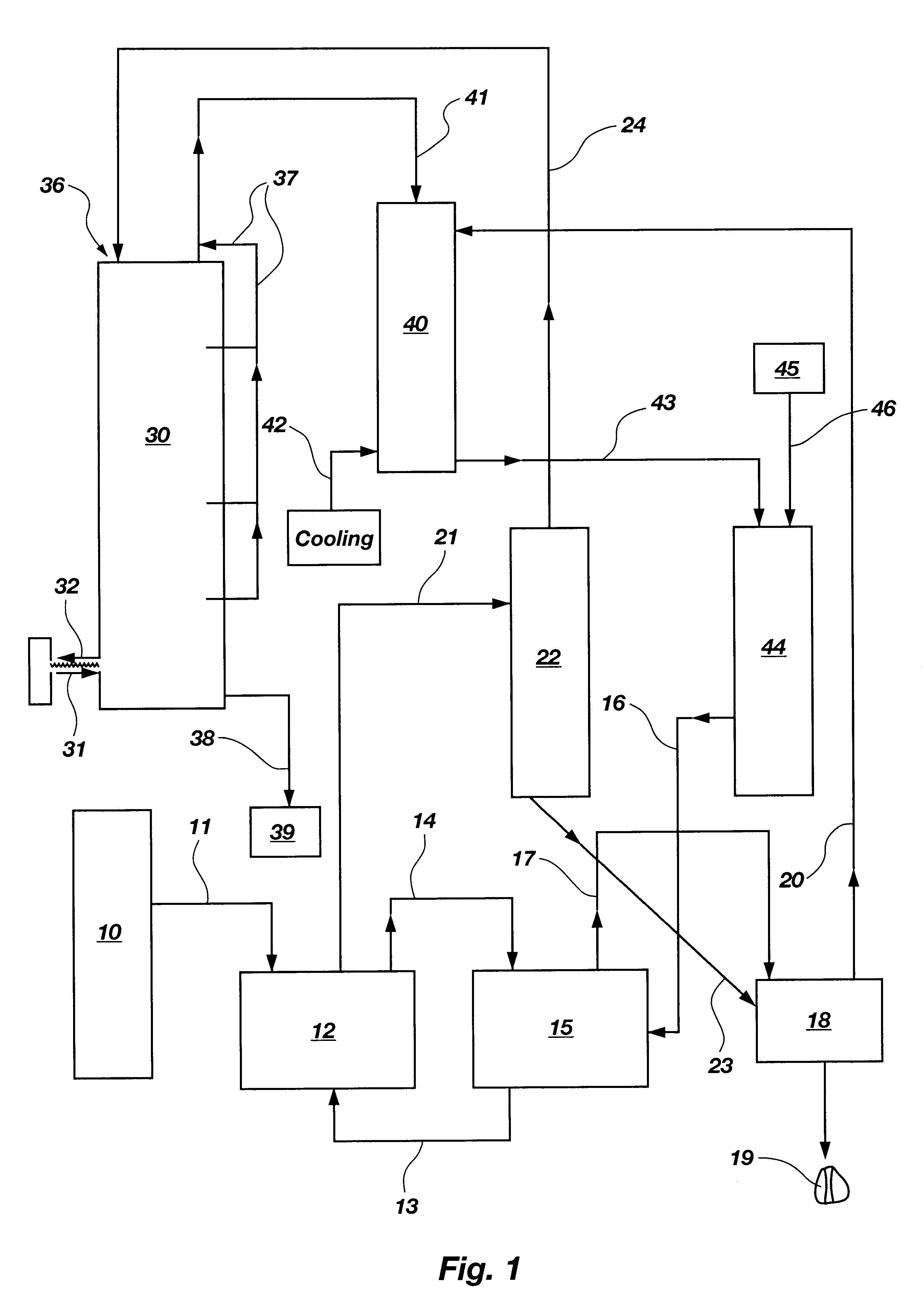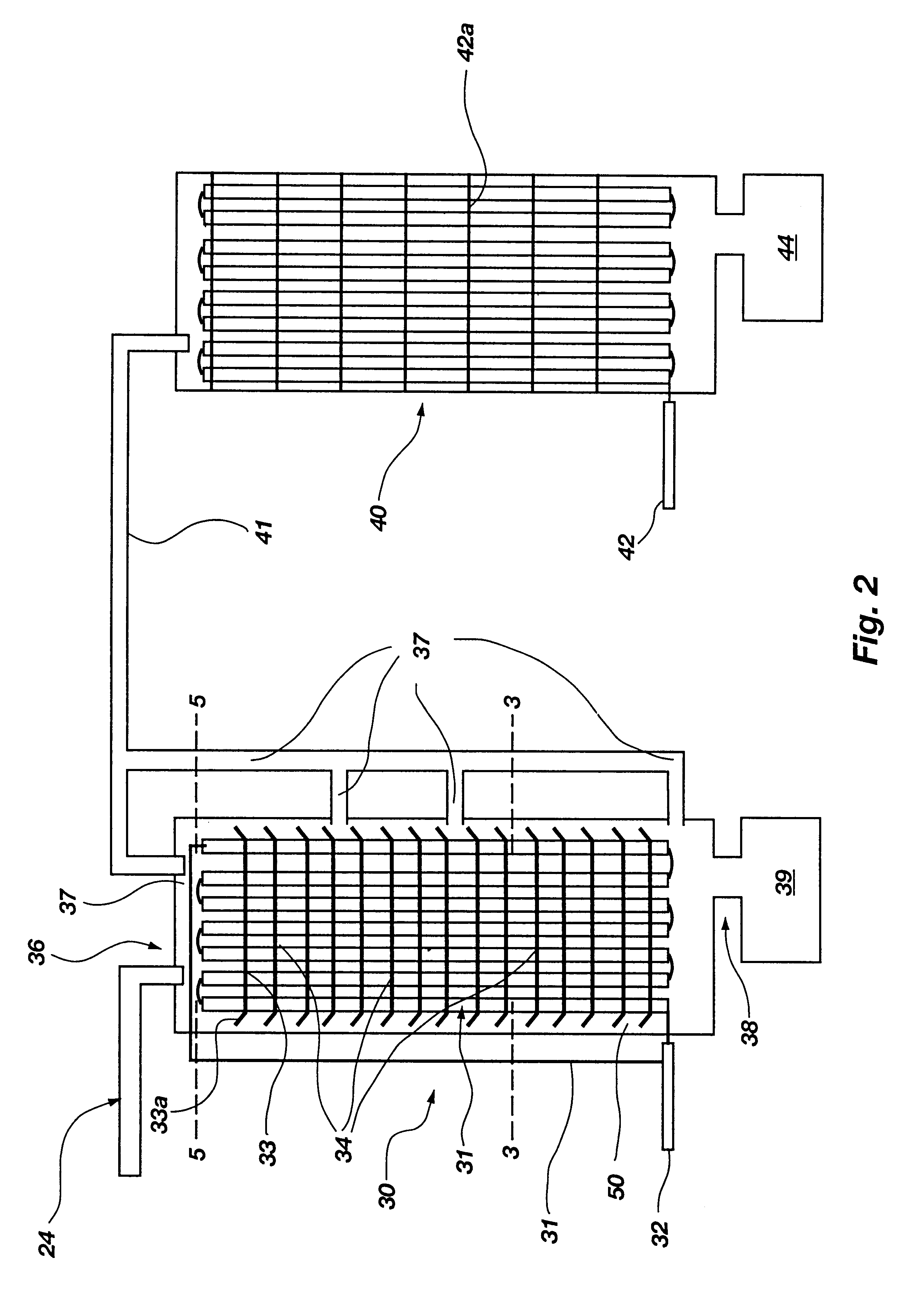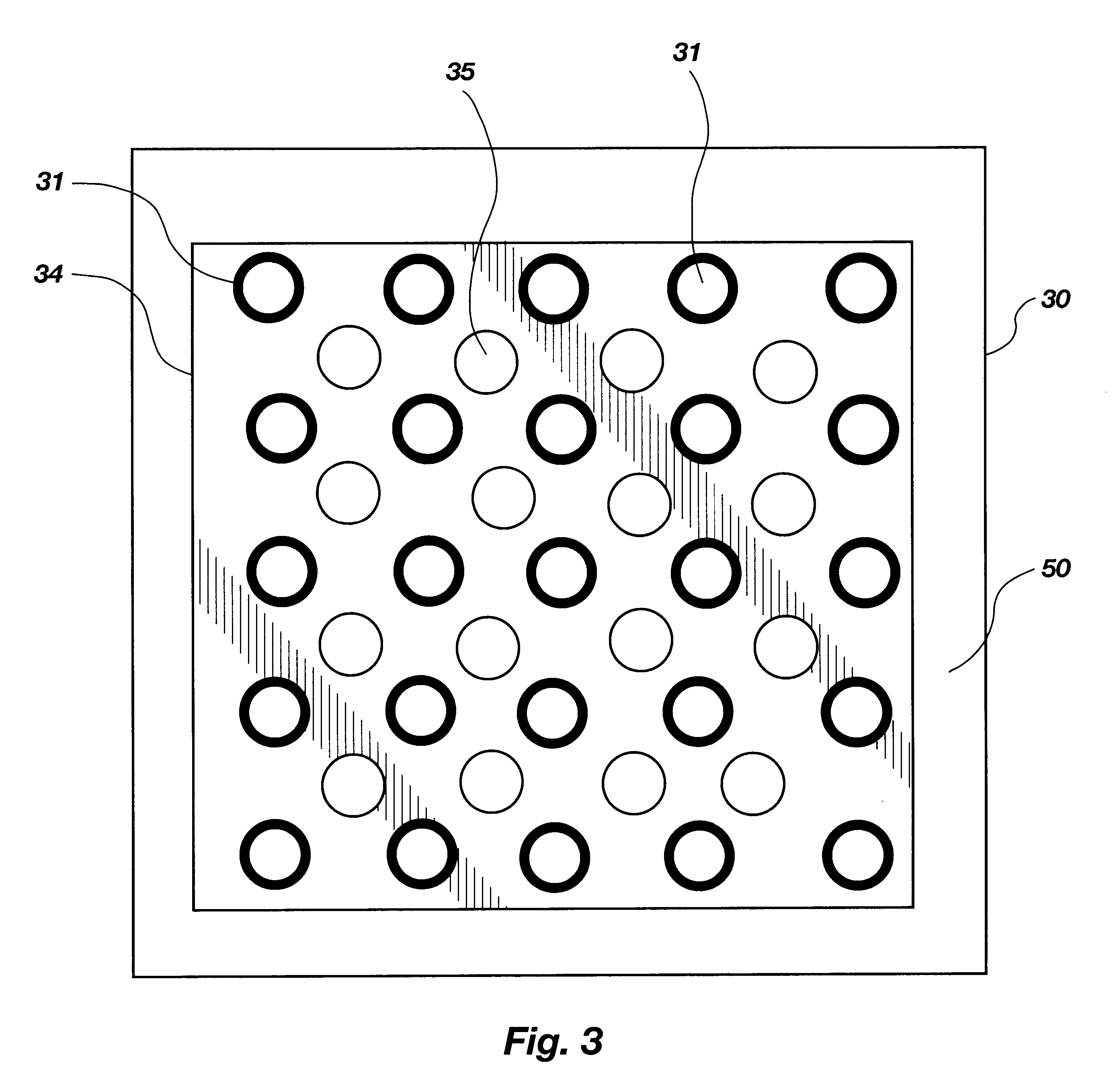Solvent extraction of hydrocarbons from inorganic materials and solvent recovery from extracted hydrocarbons
a technology of inorganic materials and hydrocarbons, which is applied in the direction of tar working up by chemical refining, fuels, and separation processes, etc., can solve the problems of contaminated soils that have not been cleaned or restored to a clean or original condition, and the environmental pollution problem is constantly escalating, so as to achieve the effect of not contaminating the environmen
- Summary
- Abstract
- Description
- Claims
- Application Information
AI Technical Summary
Benefits of technology
Problems solved by technology
Method used
Image
Examples
Embodiment Construction
There is shown in FIG. 1 a general flowsheet of the invention with FIGS. 2 through 5 illustrating a preferred embodiment of the present invention as it relates to the separation of the solvent from the hydrocarbon rich solvent following removal of the rich solvent from the inorganic sand or soil.
The sand or soil is first processed by crushing, milling, or any other mechanical operation 10 that renders the particles suitably sized for mixing with the solvent. While the processing preferably takes place on site, the sand or soil may be transported to a central location for processing. In most instances, the soil or sand will not require any preparatory steps. Certain sludges and tar sands in the form of agglomerated clumps readily disperse when introduced into a vat or tank containing the solvent. The only requirement is that the particulate size of the material from which the hydrocarbon is to be removed must be such that the solvent can dissolve the hydrocarbon from the inorganic ca...
PUM
 Login to View More
Login to View More Abstract
Description
Claims
Application Information
 Login to View More
Login to View More - R&D
- Intellectual Property
- Life Sciences
- Materials
- Tech Scout
- Unparalleled Data Quality
- Higher Quality Content
- 60% Fewer Hallucinations
Browse by: Latest US Patents, China's latest patents, Technical Efficacy Thesaurus, Application Domain, Technology Topic, Popular Technical Reports.
© 2025 PatSnap. All rights reserved.Legal|Privacy policy|Modern Slavery Act Transparency Statement|Sitemap|About US| Contact US: help@patsnap.com



